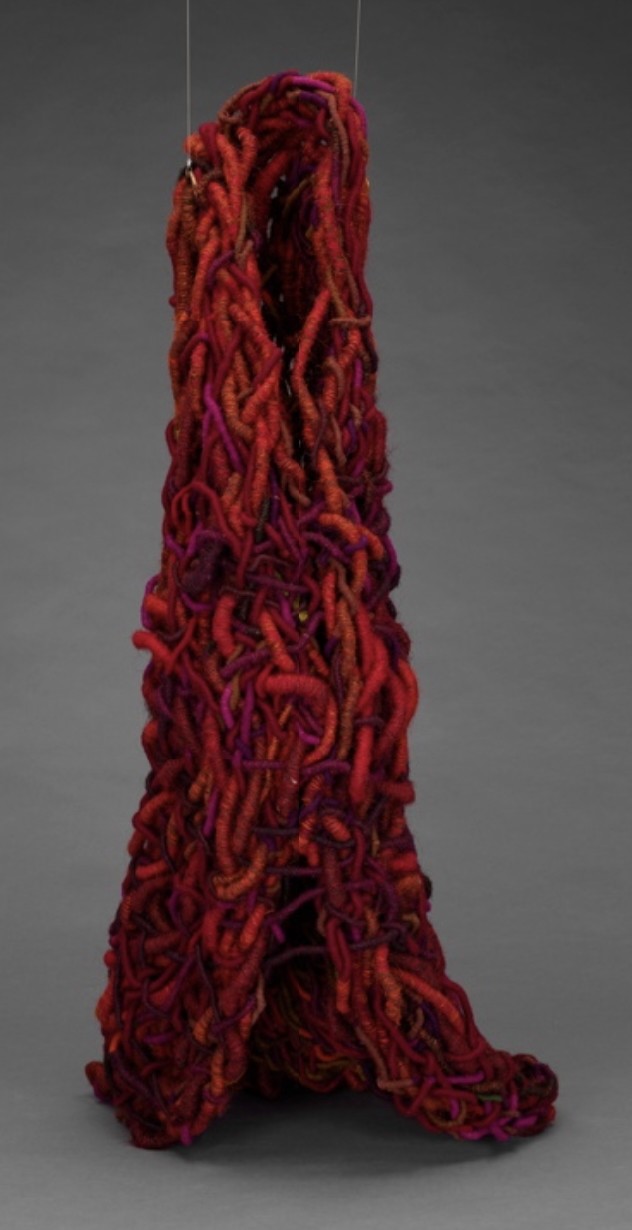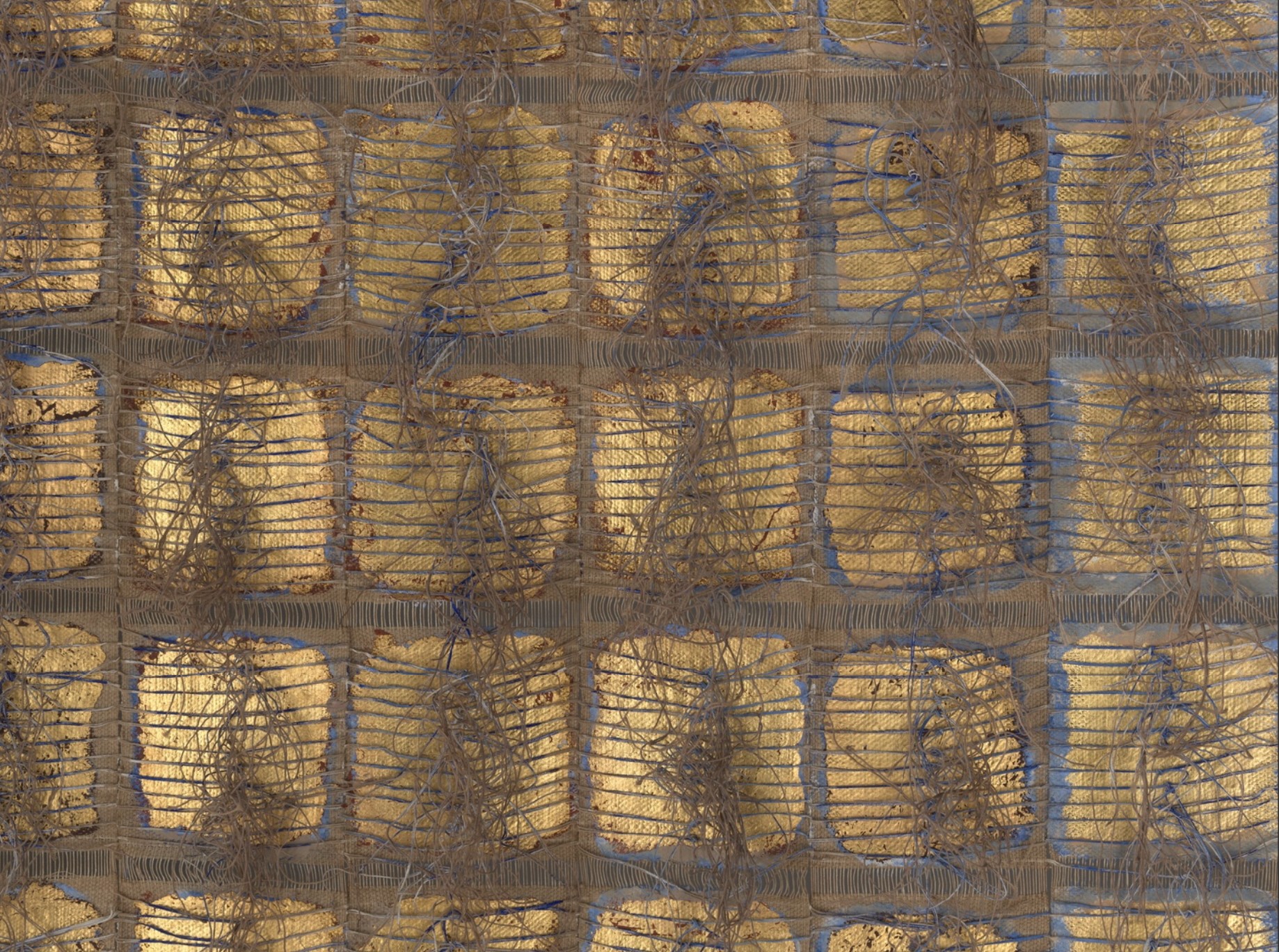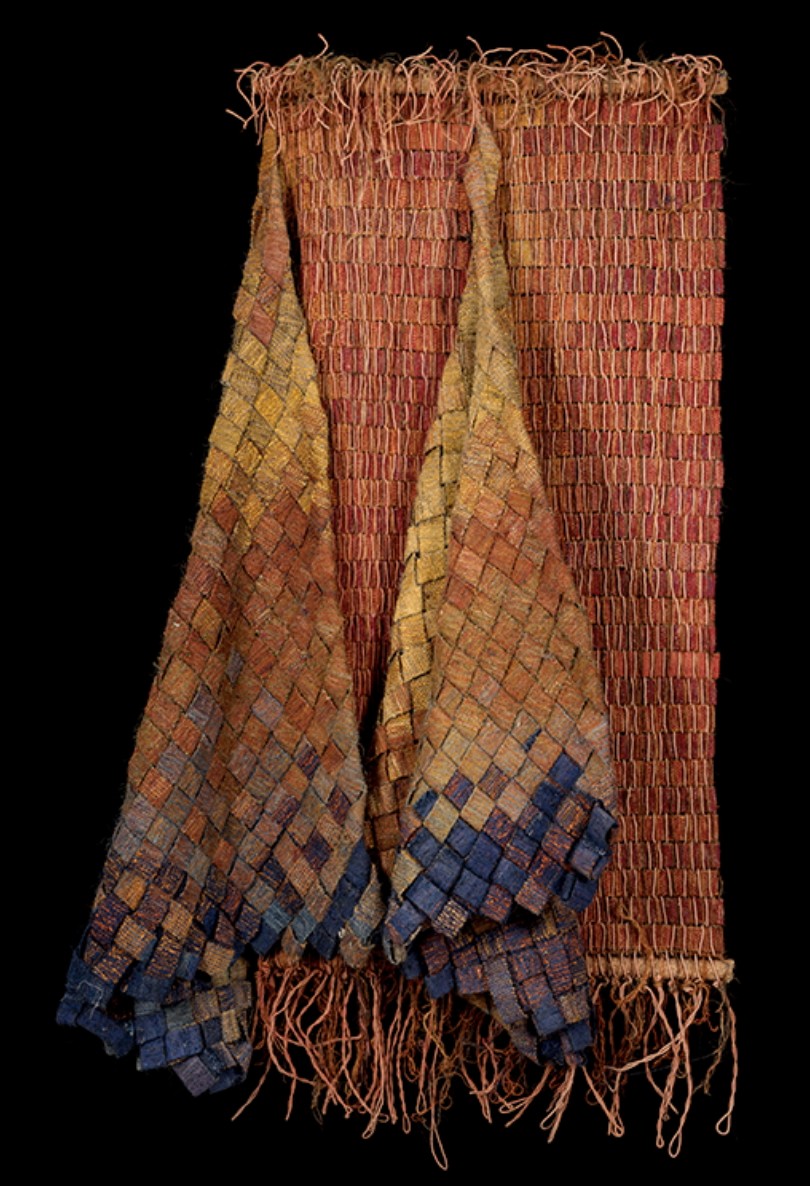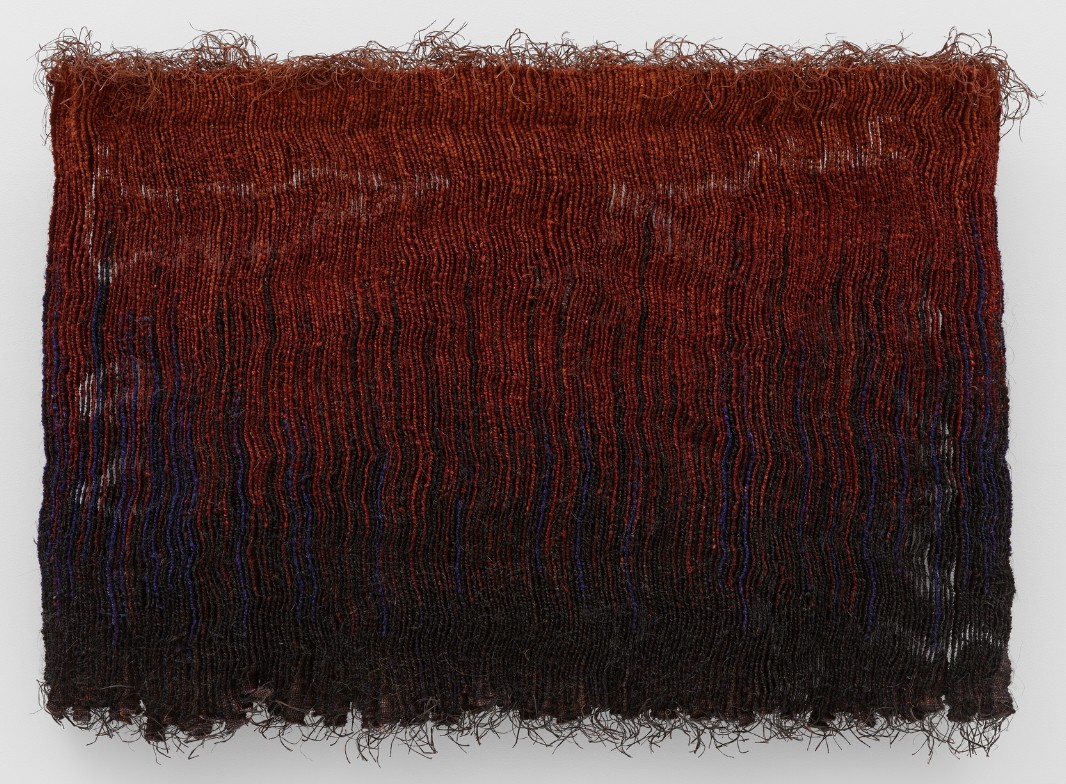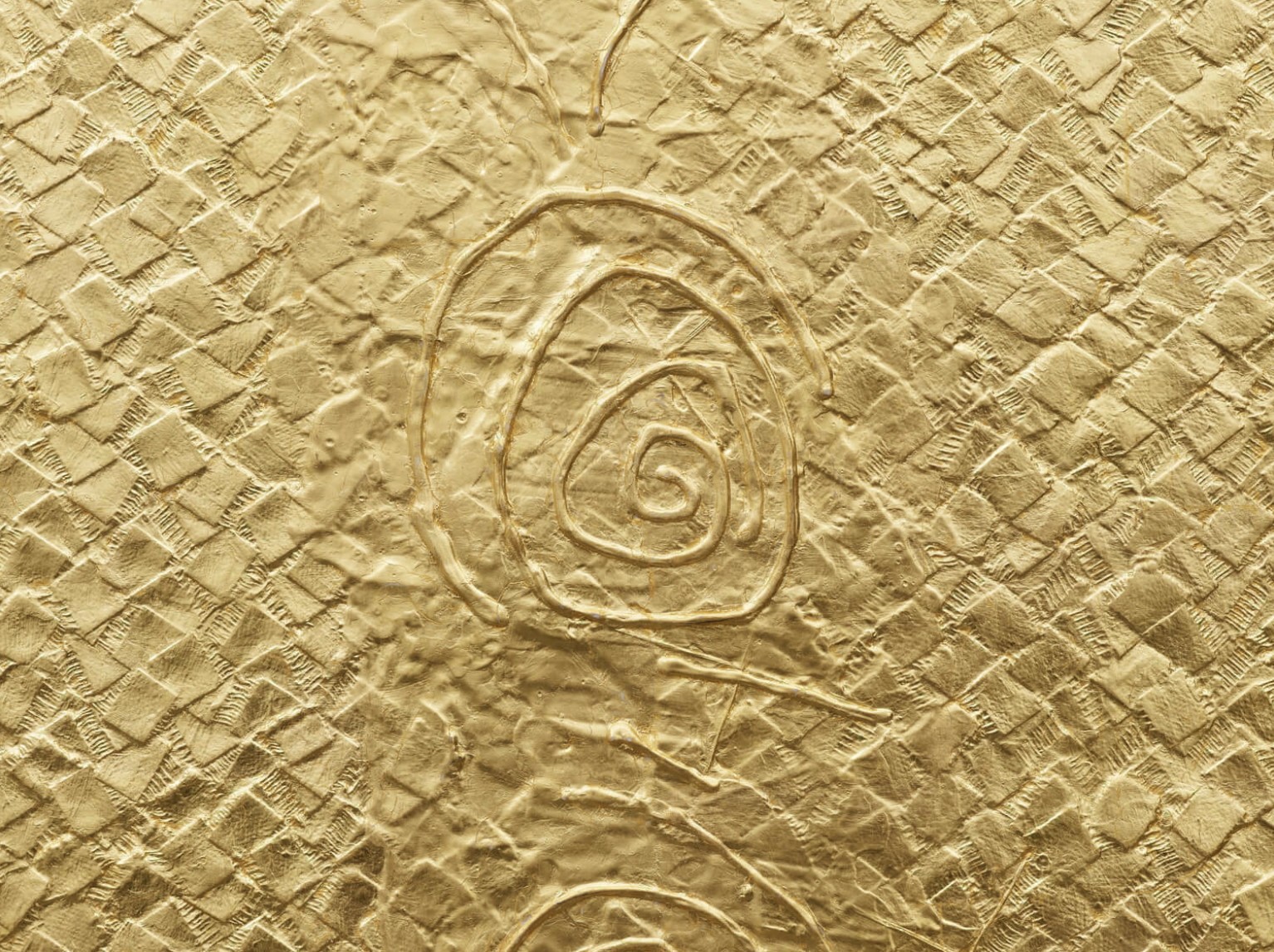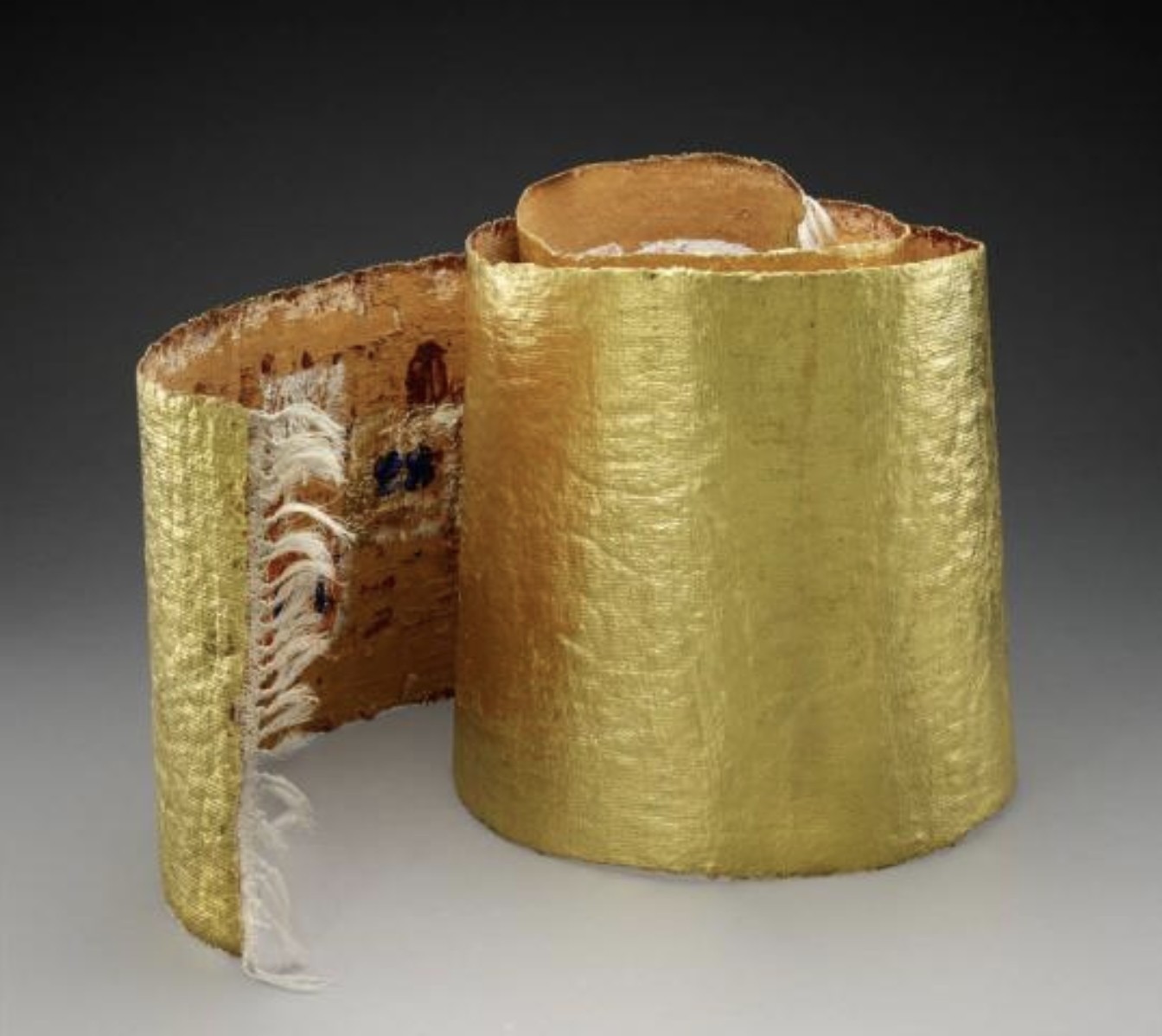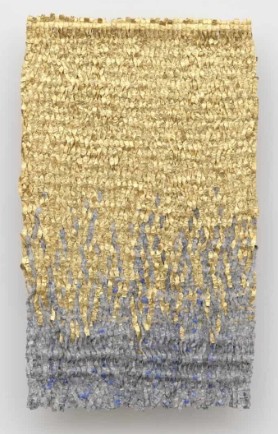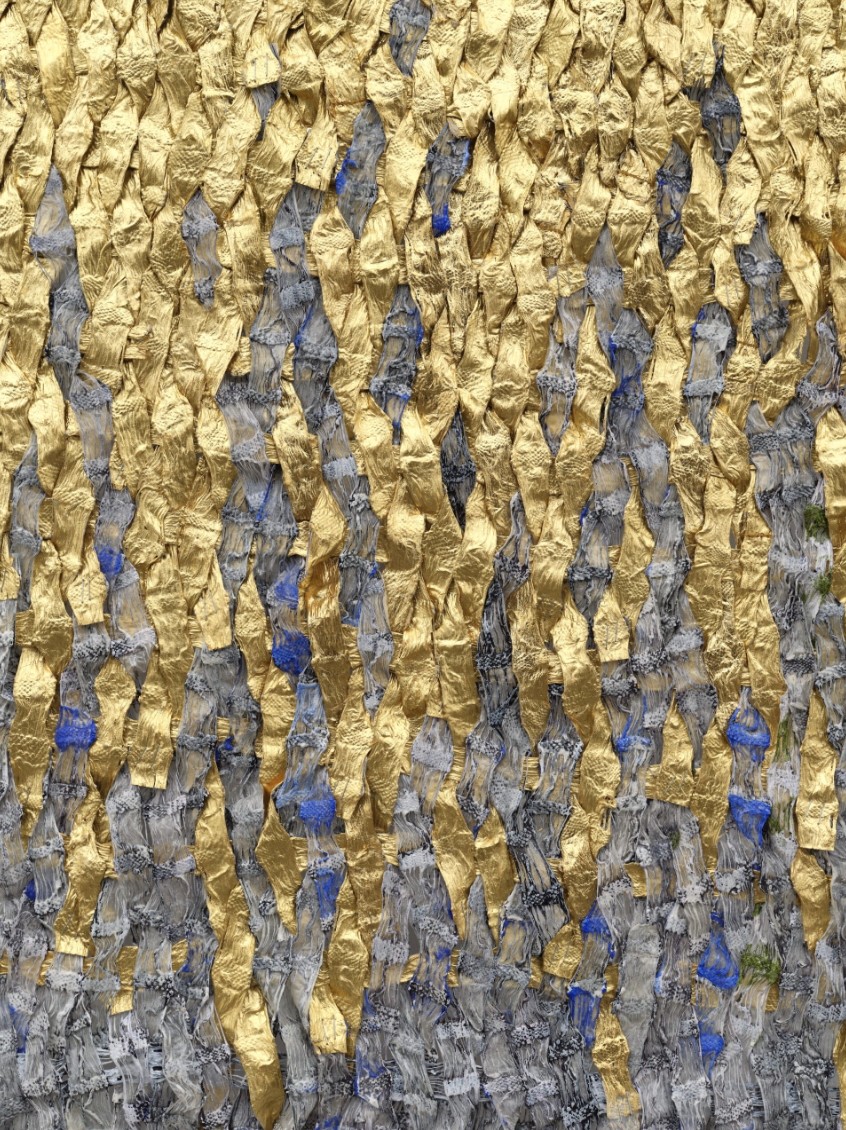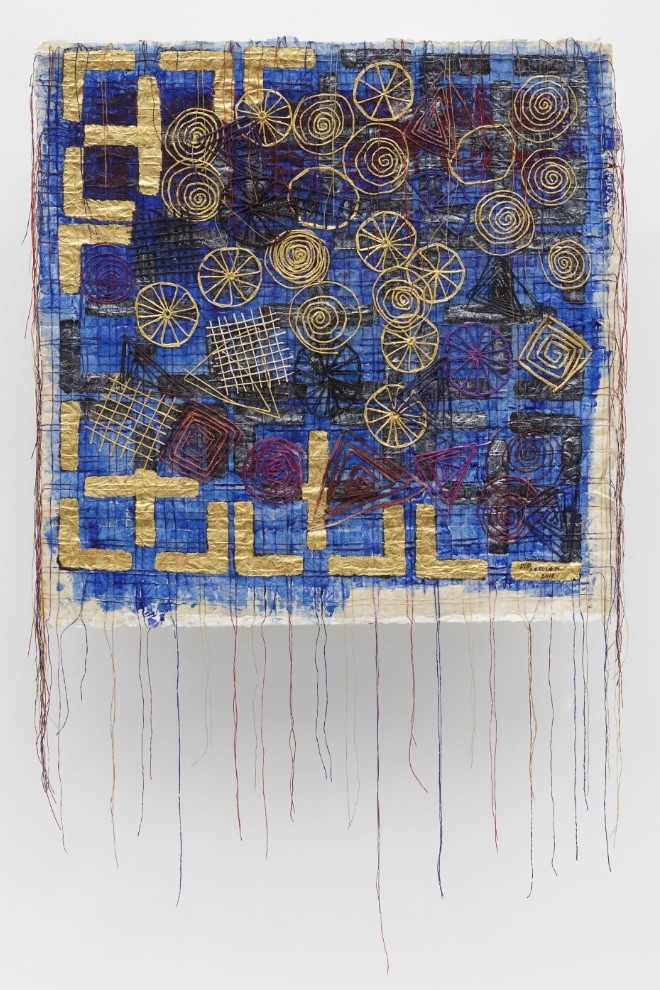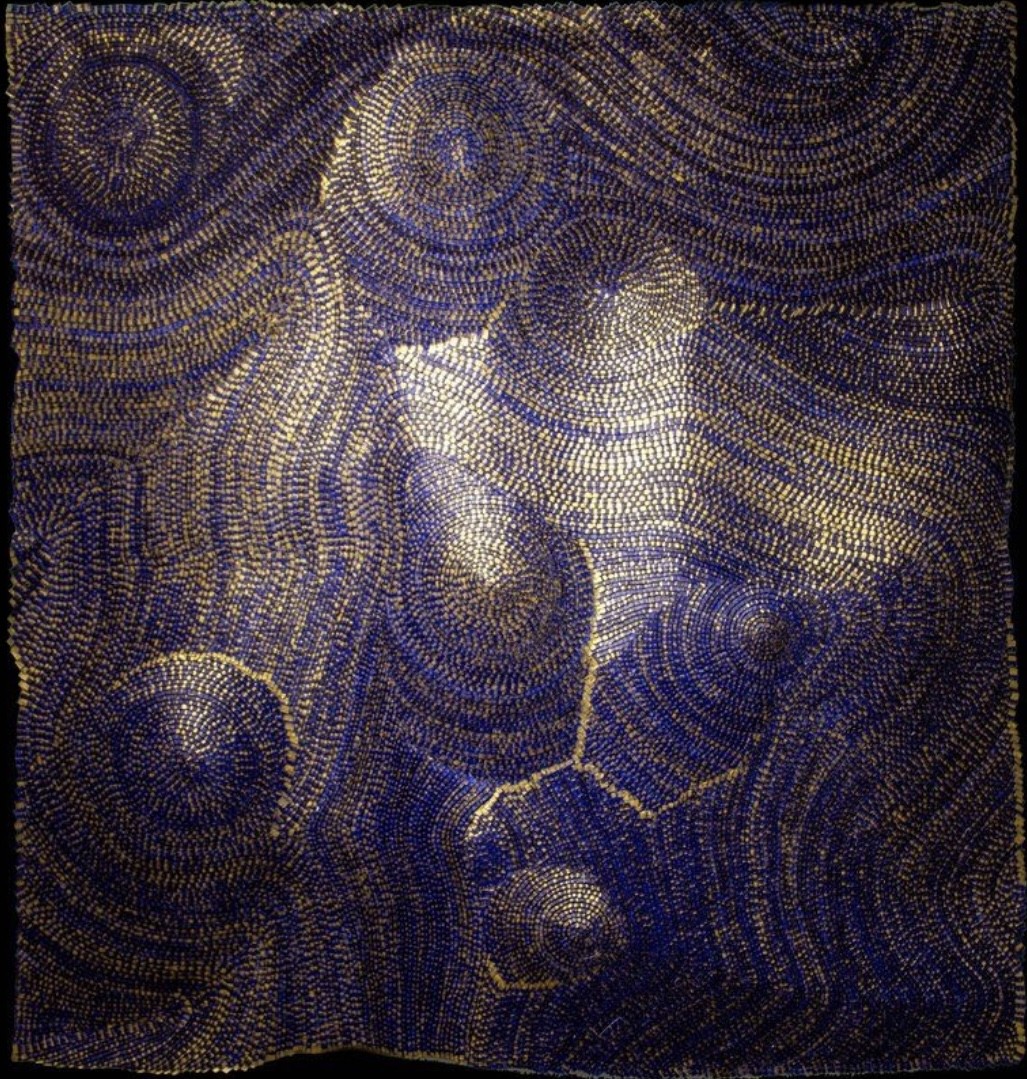Olga de Amaral: Art is a Strong Emotion
By Laura Heyrman
A pioneer of fiber art, Olga de Amaral (Colombian, b. 1932) was also an early practitioner of abstraction in South America. The artist studied architecture in her home country before attending the Cranbrook Academy of Arts in Michigan in 1954-1955. There she encountered artists exploring the possibilities of fiber as a means of artistic expression and found her own artistic calling.
After her time at Cranbrook, de Amaral returned to Colombia and opened a studio, taking commissions from architects for decorative textiles. In the 1960s, the artist became the Colombian representative on the World Crafts Council and traveled widely, exploring both traditional and contemporary textile traditions in South America, Europe, and Asia. She also established and taught at the Textile Department at University of Los Andes (Colombia) in Bogotá. De Amaral was exhibiting her work internationally and taught at craft schools in the United States in the 1960s.
“I began to work with fiber by coincidence - a sought coincidence - and have continued with it because it has never disappointed me. As I get to know it better, the better it knows me. In briefer words, it has never stopped arousing my curiosity. Fiber is like an old pencil: one has used it for so long that you take it for granted. I am made of fiber because I have embraced it and because I know it" – Olga de Amaral in The Mantle of Memory (2013)
Though she began by creating traditional two-dimensional wall hangings, in the late 60s de Amaral began to explore three-dimensional forms and even free-standing objects. The artist uses diverse materials, both natural and man-made; in addition to fibers and dyes, she employs gesso and acrylic paints from the realm of painting and even clay drawn from ceramics and sculpture. However, de Amaral is best known for her frequent use of metallic leaf, platinum, silver, and especially gold. The artist was drawn to gold for its visual effects but also for its connections to the history of Colombia, before and after the arrival of Europeans.
As articulate as her works are expressive, de Amaral, now in her 80s, has thought long and deeply about what makes up the form and meaning of her art.
“Finally, my work is nothing more than my way of telling how I feel about life, about the soul of things.” – Olga de Amaral in The Mantle of Memory (2013)
De Amaral’s work are produced in series, the titles of which reflect the artist’s interests in ritual, history and nature: Alchemies, Moon Baskets, Glyphs, Ceremonial Cloths, Forests, Rivers, Mountains, and Nebulas. No matter the theme, color is of utmost importance to the artist.
“I live color. I know it’s an unconscious language, and I understand it. Color is like a friend, it accompanies me” – Olga de Amaral, quoted on the Fondation Cartier exhibition website (see below)
Color draws the viewer and carries much of the mood and meaning in the artist’s works, while texture and scale encourage sustained engagement with their physical and emotional presence. The environments created by de Amaral’s works remind us of the artist’s early training in architecture.
“As I build surfaces, I create spaces of meditation, contemplation, and reflection. Every small unit that forms the surface is not only significant in itself, but is also deeply resonant of the whole. Likewise, the whole is deeply resonant of each individual element.” – Olga de Amaral, quoted on the Fondation Cartier exhibition website (see below)
In the 1960s and 70s, Olga de Amaral, along with Sheila Hicks (American, b. 1934), Magdalena Abakanowicz (Polish, 1930-2017) and others, introduced the contemporary art world to the power of fiber art to equal painting and sculpture. Even after a long, much-lauded career, de Amaral continues to create art which speaks of her passion for structure, texture and color.
Video of the artist discussing her work and philosophy: Olga de Amaral: To Weave a Rock. Cranbrook Art Museum, July 30, 2021, Vimeo. vimeo.com/581327613
Current and upcoming exhibitions of Olga de Amaral’s work
“Straniere Ovunque - Foreigners Everywhere." Giardini Pavilion, 60th Biennale di Venezia, Venice, Italy, April 20 through November 24, 2024. labiennale.org/en/news/biennale-arte-2024-stranieri-ovunque-foreigners-everywhere
“Olga de Amaral: Everything is Construction and Color.” Currier Museum of Art, 150 Ash Street, Manchester, New Hampshire, USA, through January 12, 2025. currier.org/exhibition/olga-de-amaral
“Olga de Amaral.” Fondation Cartier pour l’art contemporain, 261boulevard Raspail, Paris, France, October 12, 2024 – March 16, 2025. fondationcartier.com/en/exhibitions/olga-de-amaral
Please share your comments and questions on Substack. LINK irequireart.substack.com/p/viewing-room-25/comments
Longer captions may not be fully visible on smaller screens. We apologize for the inconvenience.
If the caption obscures part of the artwork, click on the image to turn off the caption.

